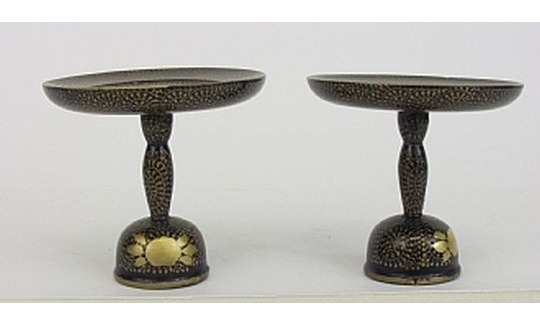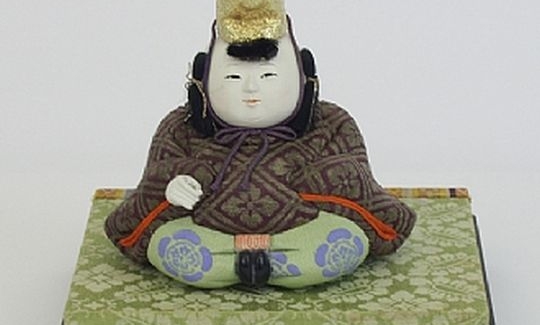THE BOYS' FESTIVAL
Kodomo no Hi, The Boys' Festival, which takes place on May 5th, is one of the five traditional celebrations (Sekku) of Japan. It is celebrated in families blessed with sons, or after the birth of a son. The festival is recorded for the first time in historical sources on the fifth day of the fifth month in the year 839, but only became a national holiday in 1948.
On this day, parents of sons hang a flag-kite shaped like a carp (Koinobori), and long banners (Nobori) decorated with paintings of famous warriors outside their homes. Indoors they display samurai dolls complete with armour, helmet, and their traditional weapons. These are symbolic of courage and manliness. During the festival, rice cakes wrapped in bamboo leaves, and rice cakes filled with sweetened bean paste and wrapped in oak leaves (Kashiwamochi) are eaten. Rice wine (Sake) with iris leaves in it (Shobu-zake) is drunk.
In China they believed that medicinal herbs and mugwort (Yomogi) hung above the eaves of the roof offered protection against illness. When this custom reached Japan it was connected with the Shintoist purification rituals conducted when the rice was planted. The iris (Shobu) is also considered in Japan as protection against evil spirits, so the festival is also known as the "Iris Festival" (Shobu no Sekku). Together with the armour displayed in the house, they also set out irises in sake bottles. In the Nara era (710-794), they wore wreaths of irises, and in the Heian era (794-1185) they hung irises and mugwort on the house eaves to drive away evil spirits. This is still practiced today.
With the rise of the samurai's status in the 12th century, the expression "Shobu" was connected with the martial arts. ("Shobu" can be written in two ways, each with a different meaning: "iris" or "esteem for the martial arts"). At the same period it became customary to give small boys kites painted with figures of famous warriors. In the Edo period (1603-1868) they gave the children long banners with paintings of carp on them. An ancient Chinese fable tells of a carp which swam up a river and turned into a dragon. In the Japanese tradition, the carp symbolizes strength and success.
THE GIRLS' FESTIVAL
The girls' festival, known as the dolls' festival (Hina Matsuri) is held in Japan on the third of March, with the coming of spring, in order to preserve the health and good fortune of little girls. It is one of the five traditional festivals (sekku) in which evil spirits are chased away and purification is achieved.
When a girl is born, or on her first birthday, her parents display her and the festival dolls to family and guests for seven days. When the girl marries, she takes her dolls with her, and they are handed down from generation to generation. In homes with small daughters, a collection of fifteen dolls is displayed on a stepped platform covered in red. These dolls represent the imperial court, dressed in the traditional robes, and arranged in order of rank: The emperor and empress (Dairi-sama), Three court ladies (Sannin-kanjo), Five musicians (Gonin-bayashi), Two retainers (Zuishin), Three servants (Eshi).
Miniature accessories are displayed beside the dolls - household effects and furniture, musical instruments, a carriage, and a sedan-chair. Diamond-shaped rice cakes (Hishimochi) are eaten, and white sake (Shirozake) is drunk.
In the past, this festival was known as the ‘Peach Blossom Festival' (Momo no Sekku) because, according to the lunar calendar, the peach flowers in the third month, though according to the solar calendar it flowers at the beginning of April. Peach blossom also symbolizes a happy marriage, and feminine attributes such as grace, composure and serenity, which is why it is also used to decorate the houses.
The festival is derived from several customs. One is the Chinese purification ritual, which takes place on the river-bank in the third lunar month; another is from the Heian era (794-1185), in which Japanese peasants celebrated the return of spring and began preparing to plant the rice. They made crude dolls out of paper or straw and floated them on the river, believing that they would carry away disease and misfortune with them as they sank. In this case, the doll was not a toy, but a charm to protect its maker. In Totori Province, the practice of floating a paper doll on a straw raft still exists.
During that period the aristocracy began to decorate their dwellings with dolls representing the imperial court, hoping thus to safeguard the emperor's wellbeing. Over the years, these dolls became more and more magnificent, and the custom spread to all levels of society. The tradition of displaying the dolls on a graduated stand began in the Edo era (1603-1868). Originally, the dolls were set on a pedestal together with a few miniature accessories, but as the popularity of the festival increased, so did the number of steps, of dolls, and of accessories.
The dolls in the homes of the working classes of Edo (today Tokyo) were obviously not as valuable as those displayed in the imperial palace at Kyoto. Like those floated on the river by peasants as amulets, they were made of paper.
By the reign of the Shogun Ienari (1773-1841), who had many daughters, the festival was complete. Ienari insisted that Japan be defended against all foreign influence by preserving the customs instigated by feudal rule and the imperial court.





